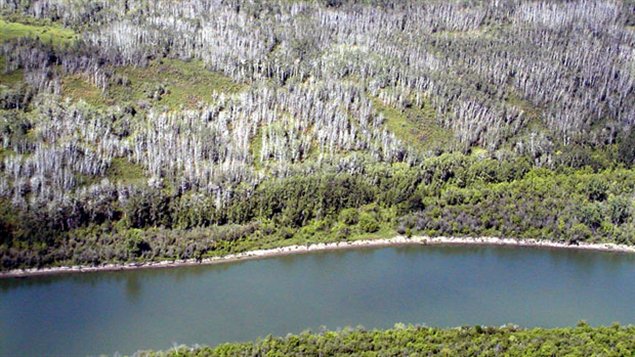A new study has suggested that Canada’s (and all) boreal forests are more vulnerable to climate change than previously thought.
Ecologists at Lakehead University in Thunder Bay, Ontario say that previous models were based on studies of older forests and an incorrect presumption that drought affects all species at relatively similar rates.
They say younger forests, which make up about 80% of Canada’s boreal ecosystems, are less resistant to change. Their research also notes that some species are more vulnerable than others.
As the climate warms and there is greater drought, species such as balsam and poplar would be more at risk than species like jack pine, which are more drought tolerant.
Tree species which appear as a later secondary arrival after a fire , such as black spruce and white spruce, are also more sensitive than species which appear soon after a fire, such as aspen and jack pine.
The researchers analyzed tree mortality patterns in 887 sample plots in boreal forests in the western provinces of Alberta and Saskatchewan, between 1958 and 2007 and related them to local climate change over that period.
They compared that to previous models predicting the effects of climate change on forests. They point out that earlier modeling has typically used data from older forests to represent all forests on the presumption that mortality rates are less likely to be affected by other factors, making it easier to tease out the effects of climate change. Typical modeling has also presumed that similar effects are seen in all species.
The results of the new analysis suggest that current predictions underestimate tree mortality due to climate change, especially in forests with younger trees and those with more drought-sensitive species. They also imply that climate change will cause changes to the proportions of different species within a forest..
The new study shows greater implications about how climate change will affect forest ecosystems, as a decrease in the relative abundance of certain species — or their disappearance altogether — will affect other plants and animals that rely on them for food, shelter or other needs.
The researchers suggested more effort may be needed to maintain or conserve more climate-vulnerable species and to reduce climate-induced drought overall.
Full study on climate change effects on tree mortality published in Nature Communications.







For reasons beyond our control, and for an undetermined period of time, our comment section is now closed. However, our social networks remain open to your contributions.